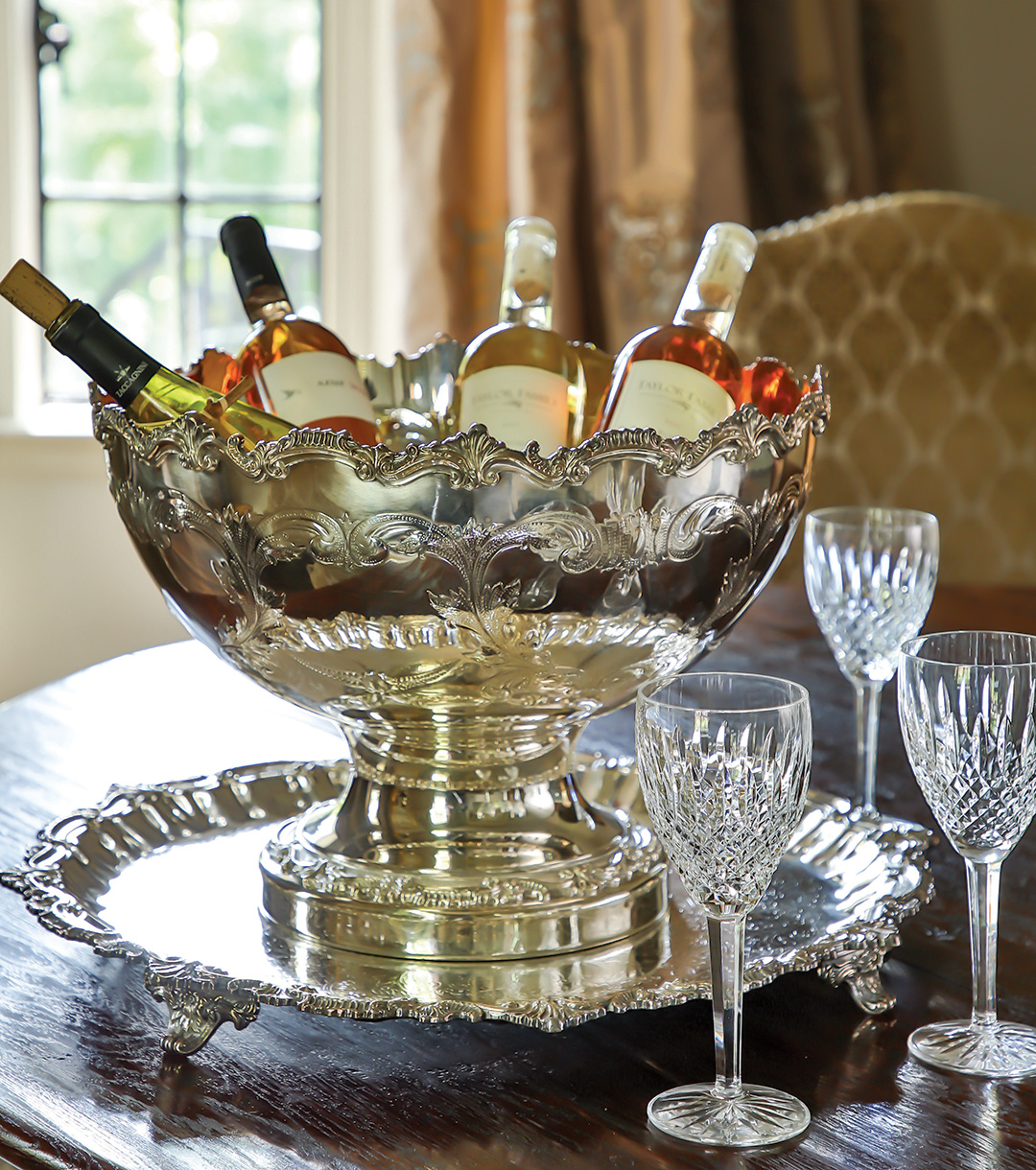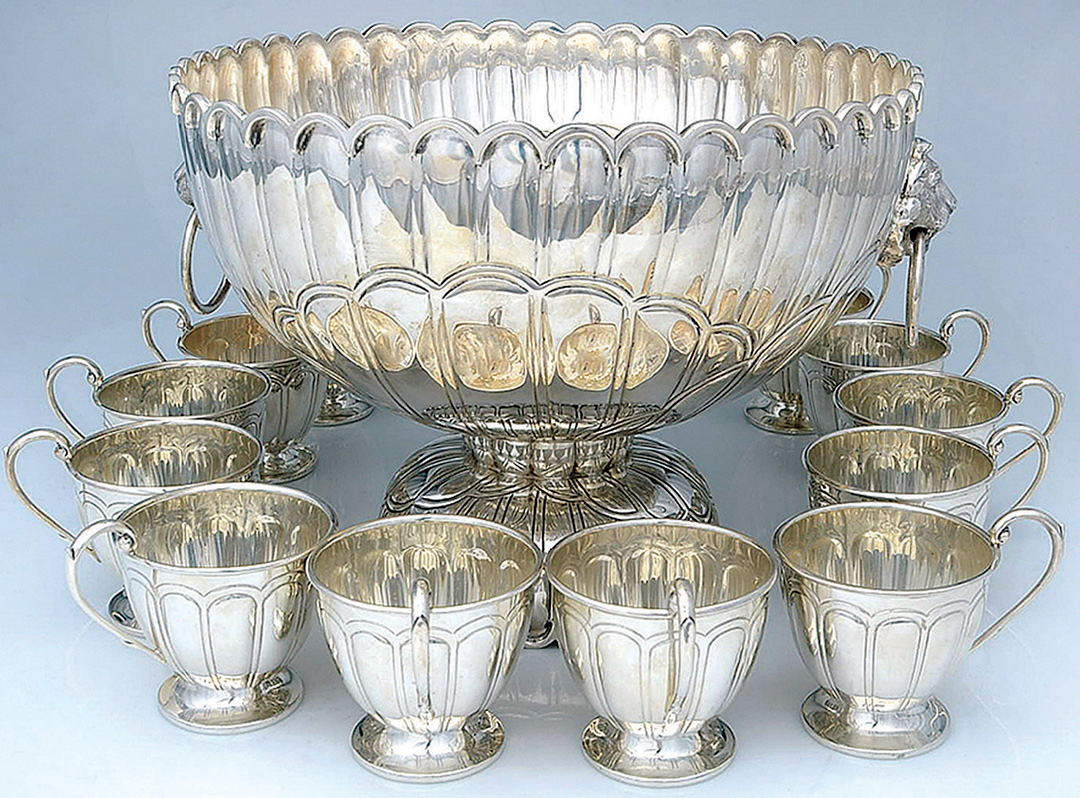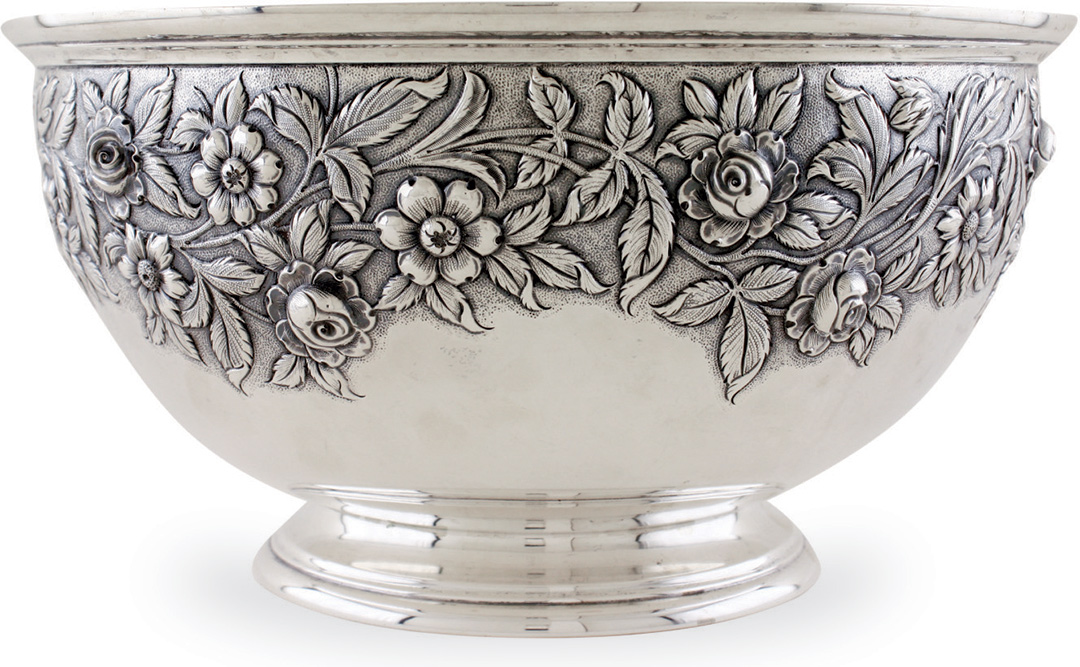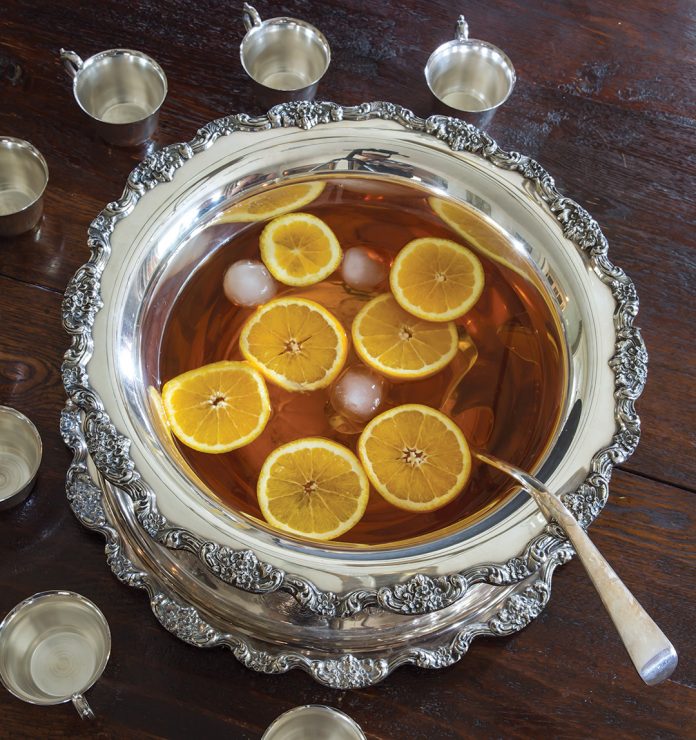It was the poet Oliver Wendell Holmes, Sr., who perhaps most eloquently described the pleasure associated with a silver punch bowl: “This ancient silver bowl of mine—it tells of good old times, of joyous days, and jolly nights, and merry Christmas chimes.” Indeed, few types of silver are as symbolic of conviviality as the punch bowl, not least because of the festive beverage for which the bowl was originally made.
According to legend, punch was introduced to England in the early-to mid-17th century when British sailors and merchants returned home from travels to India, where they had been introduced to the concoction. Adapted from the Hindu word panch, meaning five, punch was historically made according to the “Rule of Five.”

As the saying goes, “One sour, two sweet, three strong, four of weak, and spices make five”—meaning citrus, sugar, spirit, water, and spice, such as nutmeg. Although the elixir was enjoyed throughout Europe, it earned its greatest popularity in England, where it was commonly offered at men’s clubs and so-called “punch houses,” which were public establishments where the beverage was served from large communal bowls.
The earliest punch bowls were made of delftware or silver, the latter particularly favored by the upper class, which considered silver serving pieces to be important status symbols. An intriguing early version of the punch bowl is the silver Monteith bowl, believed to have been conceived in England in the 1680s. Still a well-known shape today, the Monteith bowl is recognizable by its distinctive crenellated rim, which one 17th-century writer claimed mimicked the scalloped bottom of the cloak worn by a “fantastical Scot,” Monsieur Monteigh, hence the derivation of the bowl’s name.

Originally, the vessel was designed for cooling wine glasses—when the bowl was filled with cold water, glasses could be chilled upside down, with their stems nestled in the notches of the rim. Often, the rim was detachable, which allowed the bowl to do double-duty as a punch bowl.
The popularity of punch eventually spread to the American colonies, where silversmiths produced some fine specimens of punch bowls for wealthy colonists. One of these early American punch bowls, a sizeable vessel made by New York silversmith Cornelius Kierstede sometime between 1700 and 1710, was sold at a 2010 auction for $5.9 million, a record price for American silver.
 An equally important example is the silver punch bowl made by Paul Revere, Jr., in 1768. Commissioned by the Sons of Liberty, the engraved “Liberty Bowl,” whose flanged shape is now referred to as a Revere bowl, honored the “Glorious Ninety-Two,” the members of the Massachusetts House of Representatives whose act of civil disobedience against the English government was a defining event leading to the American Revolution. The bowl now resides in the Museum of Fine Arts, Boston.
An equally important example is the silver punch bowl made by Paul Revere, Jr., in 1768. Commissioned by the Sons of Liberty, the engraved “Liberty Bowl,” whose flanged shape is now referred to as a Revere bowl, honored the “Glorious Ninety-Two,” the members of the Massachusetts House of Representatives whose act of civil disobedience against the English government was a defining event leading to the American Revolution. The bowl now resides in the Museum of Fine Arts, Boston.
Practically ubiquitous at social gatherings during the 19th and 20th centuries, punch bowls have managed to maintain their appeal over the years thanks to their versatility. Mimi Woodruff of Beverly Bremer Silver Shop in Atlanta even recommends using them for purposes beyond serving punch and eggnog. “Silver punch bowls are the ideal size for a grand centerpiece of fresh-cut flowers or as a container for ice to chill bottles of wine or Champagne,” she says. But at the end of the day, it is the silver bowl’s classic elegance that is its greatest asset, according to Woodruff. “A punch bowl is beautiful even when empty.”

Need to KNOW
MADE ITS DEBUT: Mid-17th century.
MOST COMMONLY FOUND IN: England and America, where the punch bowl’s popularity lasted well into the 20th century.
NAMES TO LOOK FOR: Most English and American silversmiths made punch bowls, although production tapered off in the 20th century. Thomas Eckardt, proprietor of Hadley Antiques in Stamford, Connecticut, specializes in English silver plate and says that his clients get excited by English examples from Mappin & Webb, Walker & Hall, and James Dixon & Sons. However, according to Eckardt, “Hotel silver punch bowls of any origin seem to be very popular today.” Mimi Woodruff of Beverly Bremer Silver Shop in Atlanta, who deals mainly in American silver, cites antique and vintage bowls from Gorham, Tiffany & Co., Whiting, and Reed & Barton as particularly desirable.
PRICE RANGE: Depending on their size and whether or not they come with matching ladles, cups, or trays, punch bowls can range from the low thousands to $20,000 and beyond.









